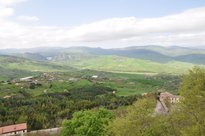 |
As we look northeast from Troina, we can see Hill 1209, the area where first abortive attack occured on 1 Aug 1943. The 39th barely left their foxholes when they
were repulsed by heavy artillery concentrations. The battle of Troina was not an an attack on the town through open, undefended ground. Every foot of the hills we see were
laced with machine gun nests, pillboxes, mortar pits, mines and barbed wire - all manned by crack German troops fighting for their lives and most important, all subject to a rain of
artillery shells guided by observers in Troina with this perfect view. The Ancipa Dam is visible left, center. The dam, a post-war project, brought some prosperity to the area. |
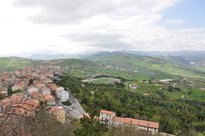 |
Highway 120 snakes from Troina to Cerami which is denoted by the sharp peak in the center ridgeline. To the right (north) of the highway is hill 1209,
site of the first abortive attack. The closest ridgeline past the football field is hill 1034 where the southern pincer of the 1 August attack was stopped. All of the buildings
you see were constructed after the war. |
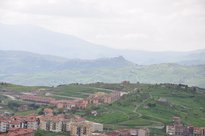 |
A closeup of Cerami the staging area of the 39th Infantry Regiment. North of it (to the right,) the 26th Infantry massed to attack the mountains
north of Troina in an effort to
cut highway 120 east of Troina in an effort to surround the town and block the escape of the German defenders. |
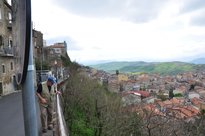 |
Coach Miller views the steep drop from Troina. Photos can't really depict the sheer peak upon which Troina is built.
It truly must be seen first-hand. The ridgeline at the extreme right is hill 1034 where the southern half of the 39th INF pincer attack was stopped on 1 Aug 1943.
From 3-6 August, the 16th Infantry took up the attack eventually reaching Troina as the Germans pulled out. |
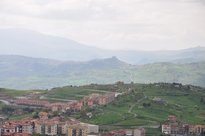 |
Another closeup of Cerami, the assembly area for the 39th Infantry Regiment. |
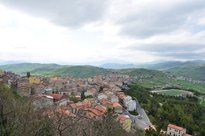 |
Hill 1043, Cerami, Highway 120. None of the structures existed in 1943, this entire area was under constant artillery barrage until the withdrawal of the
Germans on 6 August. |